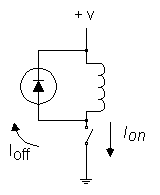Dear George,
I commend you for volunteering to help, and congratulate you on your success.

Sincerely,
Joe Satnik
Perhaps someone handy could create a virtual medal with Bach-Man's image on it.
He is, of course, the original model train trouble-shooting super-hero...
I commend you for volunteering to help, and congratulate you on your success.
Sincerely,
Joe Satnik
Perhaps someone handy could create a virtual medal with Bach-Man's image on it.
He is, of course, the original model train trouble-shooting super-hero...

